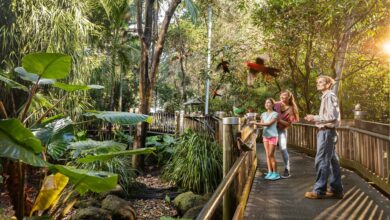Ipswich City Council’s new administration building – part of the Nicholas St redevelopment – is set to be an exemplar for sustainable development.
With items such as “smart” glass, a reflective colour scheme, environmentally-friendly glue, and modern construction techniques, the building will have a 5-star, Green Star rating, which indicates a standard of Australian excellence when it comes to incorporating sustainable design, materials and management.
“Sustainable building design is about making sure that each step involved in creating a new building causes the least amount of negative impact on the planet and the natural environment,” council’s general manager of coordination and performance Sean Madigan said.
“From the choice of location, the proposed longevity and durability of the building, the interior and exterior designs, the choice of building materials, the inclusion of water recycling facilities and even how the building contractors dispose of building waste on site.
“This building is a good example of sustainable design.”
To publicly show how sustainable a particular building is, ratings systems are applied to measure a number of factors such as energy efficiency, water usage and the building materials used.
A rating is then given to that building, which clearly demonstrates what sustainable and environmentally-friendly measures have been undertaken during the building’s lifecycle, from the drawing board to its day-to-day functions.
In Australia, Green Star and NABERS (National Australian Built Environment Ratings System) are the two main bodies that issue new buildings with a rating.
To gain a Green Star rating, an assessment is made that takes into account the building’s sustainable design, construction and operation of buildings, and how the building is fitted out, while NABERS is a national rating system that measures energy efficiency, water usage, waste production and its subsequent management and indoor air quality within the built environment.
Most of the elements of a well-designed and sustainable building are the things we can’t necessarily ‘see’, such as the type of glue used in the building’s construction , the manufacturing processes used off-site to create building materials or the type of glass used in the windows.
‘Smart’ glass will be used to help control light and temperature, which will mean employees have less need to use overhead lighting. Similarly, the ability of the smart glass to maximise the use of outdoor heat and cold will mean less reliance on air-conditioning systems.
Even the interior colours will be chosen specifically for the ability to retain and reflect light, again minimising the need for constant lighting.


